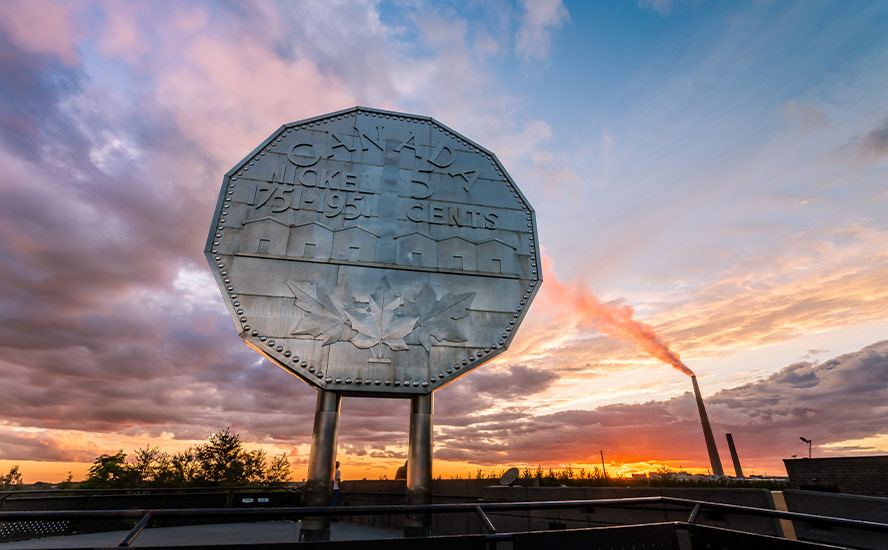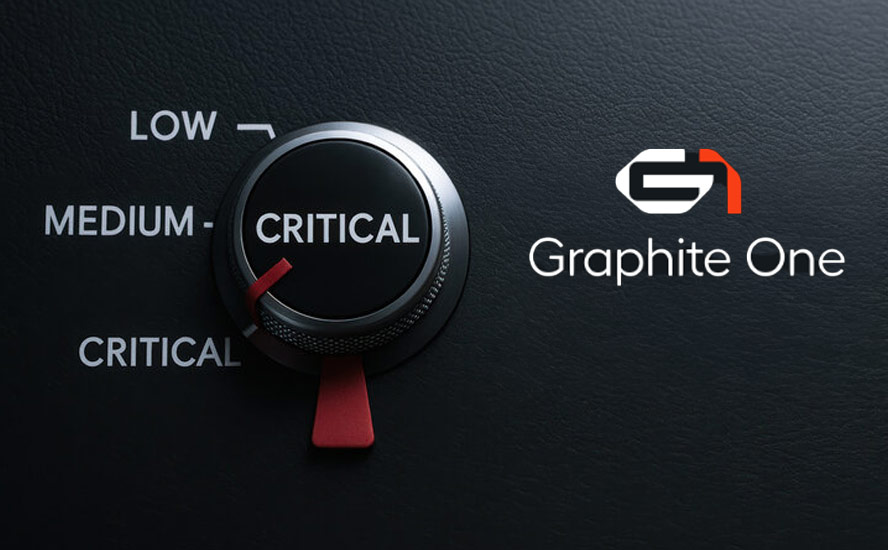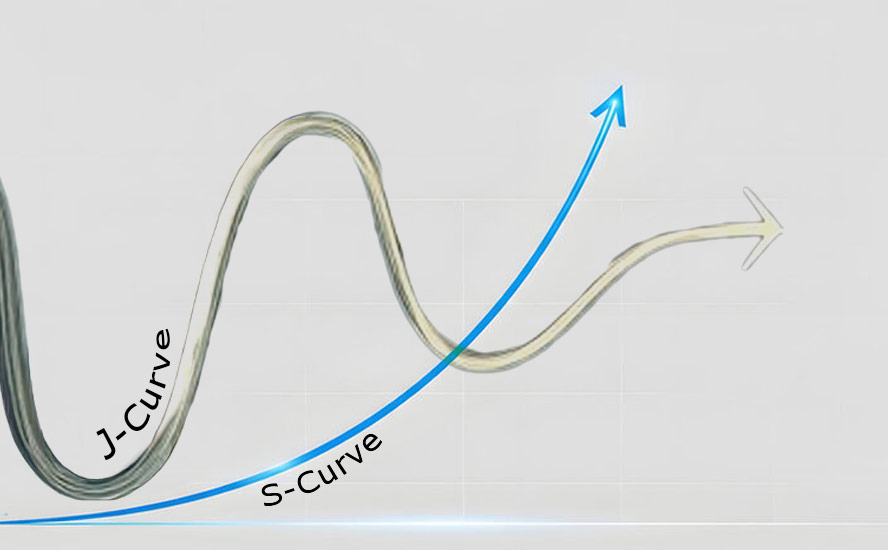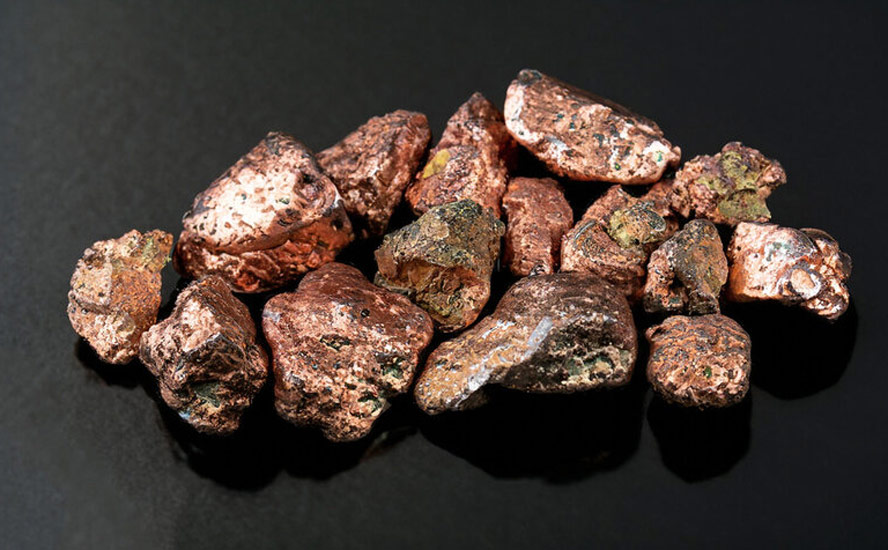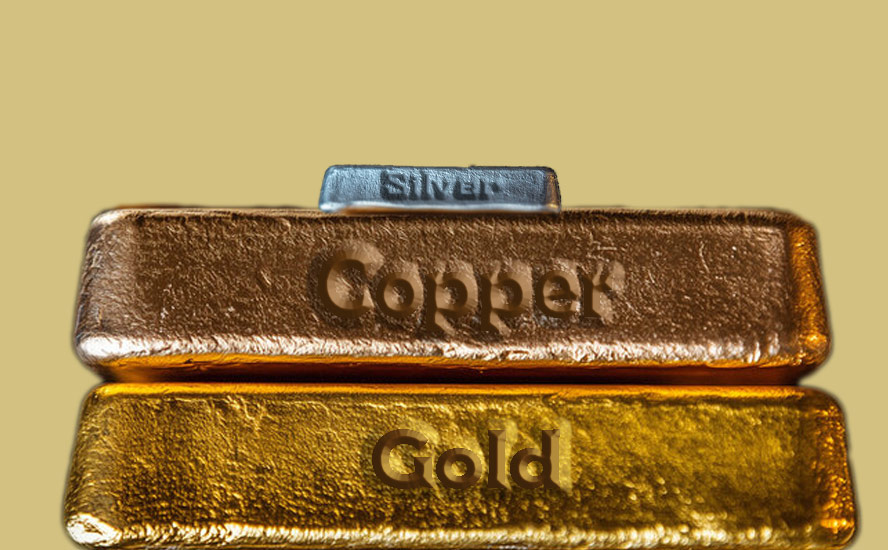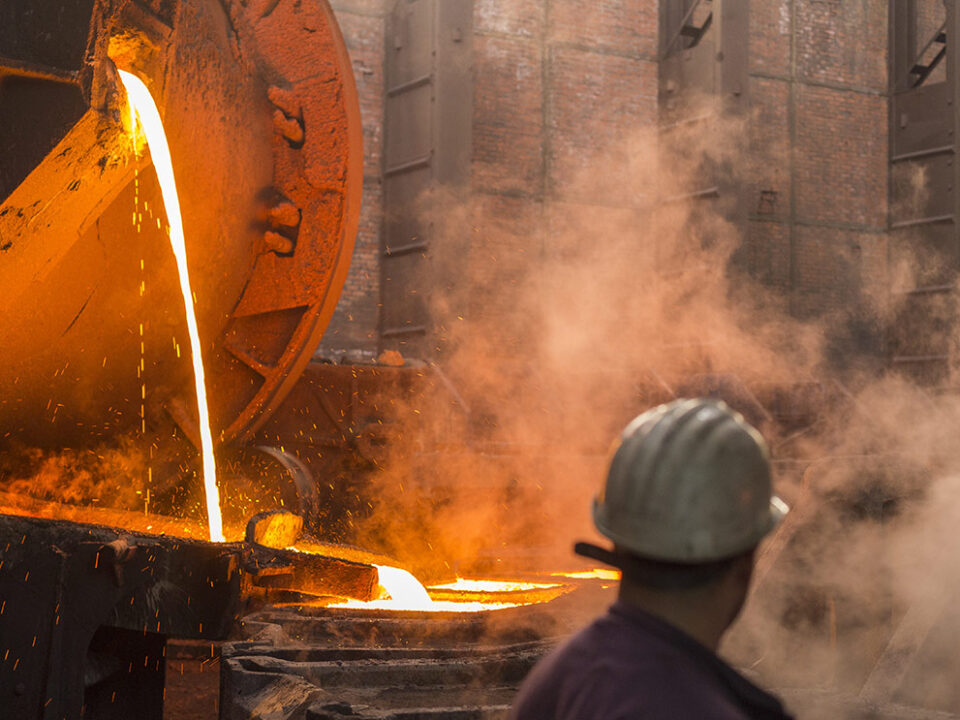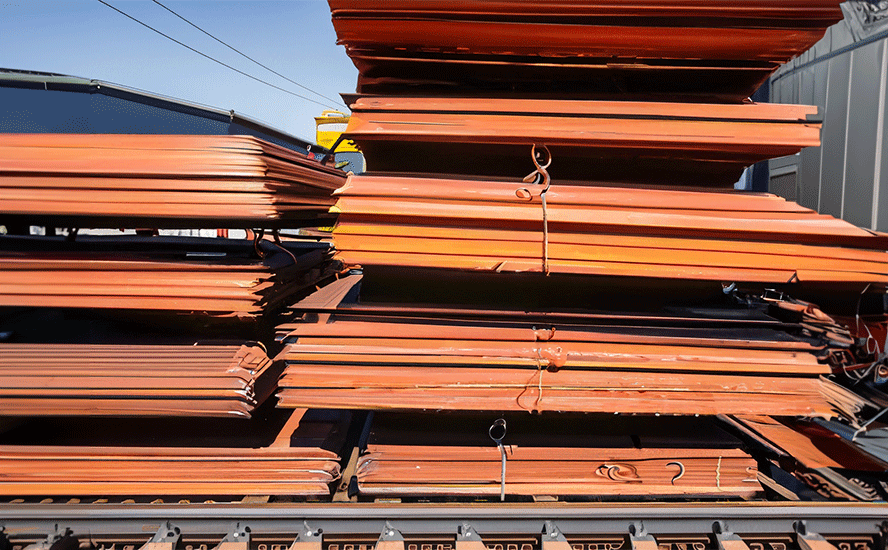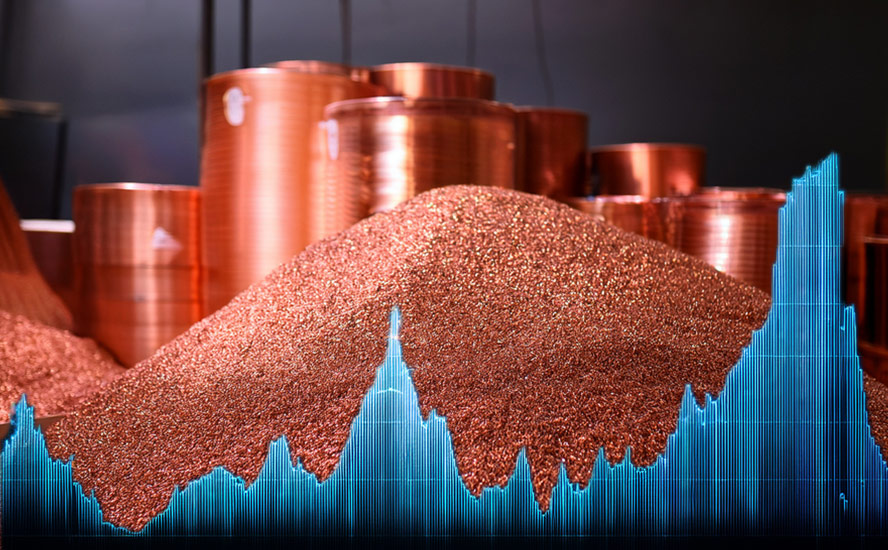GM signs nickel offtake with Vale, showcasing Canada’s resource and supply chain potential – Richard Mills
2022.11.23
Ask yourself, “when is the best time to invest in nickel?”
While you mull over that question here are five facts:
- Nickel is currently unloved. While nickel prices shot higher in March following the war in Ukraine, they have been more than cut in half — part of a cross-the-board metals selloff due to recession fears and a high US dollar. In September, Bloomberg reported that nickel sales by commodities-dealing banks hit by soaring borrowing costs caused spot contracts to plunge to the deepest discount to futures since the 2008 financial crisis.
Nickel goes parabolic on historic LME short squeeze
- There aren’t any nickel names left. Without Inco or Falconbridge, who do you invest in if you want nickel? The largest nickel-producing companies, Norilsk, Vale and Glencore (formerly Xstrata) don’t actually provide a lot of leverage to nickel as they are diversified miners — meaning they also produce iron ore, manganese, bauxite, aluminum, copper, coal, cobalt, potash, platinum-group metals, gold and silver.
- Every country needs to secure nickel at competitive prices yet supply is increasingly constrained and demand is growing, especially for sulfide nickel used in electric-vehicle batteries. Wood Mackenzie estimates that of the 2.8 million tonnes demanded last year, 69% was used to make stainless steel and 11% to make batteries, up from 71% and 7% respectively in 2020. Batteries’ share of demand is expected to rise to 13% in 2022. According to Rystad’s latest report, nickel demand from the stainless-steel industry should grow at about 5% per year, while the market for batteries is poised to explode. “In an unconstrained supply scenario, batteries could require more than 1Mt of nickel metal by 2030, quadrupling from the current demand of 0.25Mt,” the energy research firm said.
World’s running short on nickel supply for battery use
- Juniors exploring for nickel from sulfide ore deposits have become much more interesting. Especially so if they are working in geopolitically stable countries.
- Pure junior sulfide nickel exploration plays aren’t common.
Meeting new emissions targets being set by countries like Canada, the US, Britain, and Japan, will mean large-scale deployment of electric vehicles, renewable power, and electrical transmission, all of which will require copious metal content.
With an abundance of battery metals and cheap hydroelectric power, particularly in British Columbia and Quebec, Canada is uniquely positioned to become an EV leader, from the mining and processing of metal ores, all the way up to the manufacture and assembly of electric and hybrid vehicles.
This is not just idle talk. A series of recent announcements have underscored Canada’s growing potential in the North American EV supply chain.
In May, Brazil-based mining major Vale signed a deal with Tesla to supply nickel from its Canadian operations. Vale Canada operates the Voisey’s Bay nickel mine in Labrador and it also has nickel mines in Manitoba and Ontario. In March, Vale announced plans to supply nickel to Northvolt AB, a Swedish battery manufacturer. According to Vale, via the CBC, about 5% of its production already goes to electric vehicles, and it plans to increase its production share to between 30 and 40%.
The national broadcaster quoted an industry expert saying that automakers plan to build 7.7 million electric vehicles in 2022, but will only have enough nickel to build around 3.6 million.
A report by UBS indicates that a deficit in nickel will come into play this year. By the end of the decade, UBS forecasts a large deficit of 2.2 million tonnes for the battery metal.
A more conservative estimate from Rystad Energy shows that demand for high-grade nickel used in EV batteries will outstrip supply by 2024. By then, global demand will climb to 3.4Mt, compared to 2.5Mt this year, while supply will grow to 3.2Mt.
The gap will then widen quickly to a deficit of 0.56Mt by 2026, driven by surging demand from the battery sector.

World’s running short on nickel supply for battery use
Vale’s Tesla and Northvolt offtake agreements were followed in August by memorandums of understanding between the Canadian government and two of Europe’s largest auto manufacturers, Volkswagen and Mercedes Benz. The MOUs would reportedly help the German carmakers to access Canadian critical minerals primarily found in parts of northern Ontario and Quebec.
Those that do, would be eligible for tax credits worth up to USD$7,500 for electrical vehicle buyers, as long as automakers manufacture their vehicles in North America, and source most of their critical minerals and battery materials that have a free-trade agreement with the US. (CBC News, Aug. 23. 2022)
Earlier this year, Ottawa inked deals with Umicore SA, Stellantis NV and LG Energy Solution to build cathode and battery factories.
Last week, Vale signed another offtake, this time with General Motors, to supply it with 25,000 tonnes of battery-grade nickel sulfate annually, from the miner’s proposed Becancour plant in Quebec. Construction of the plant has yet to begin, but in June Vale concluded a prefeasibility study.
GM says it has the capacity to build 1 million EVS in North America by 2025, and it has signed supply agreements with at least 20 battery materials companies, including Korea’s Posco Chemicals. In March, GM and Posco agreed to build a $500 million cathode materials plant in the same Becancour region.
The offtake with Vale, which begins in 2026, would supply GM with enough refined nickel for 350,000 EVs per year.
According to GM’s Doug Parks, via the Financial Post, the Canadian nickel sourced by GM “will help support EV eligibility for consumer incentives under the new clean energy tax credits in the U.S.”
The US military has reportedly been allocated hundreds of millions of dollars to implement the DPA and expand the domestic mining sector. It’s interesting to note that Canadian mining projects qualify under this program, because the country belongs to the US military industrial base. Canadian officials say they’ve already provided the US with a list of 70 projects that could warrant funding.
According to CBC News, Canada is also providing billions in public funds to the sector in coming years through federal and provincial programs.
Meanwhile, facing criticism of “going too easy” on China, the Canadian government recently passed legislation making it harder for foreign state-owned firms to invest in Canadian critical-minerals companies.
Effective immediately, transactions involving investments by state-owned firms into these companies will only be approved on an “exceptional basis”.
Canada’s protectionist stance triggered action in October, when Chinese firms were ordered by governments to divest from three small battery metals explorers, including Calgary-based Lithium Chile.
Canada has also joined the Minerals Security Partnership, aimed at securing the supply of critical minerals as global demand for them rises. Other members include the United States, Australia, Finland, France, Germany, Japan, South Korea, Sweden, the United Kingdom and the European Commission. Note who is not in the club: China and Russia.
Deputy Prime Minister Chrystia Freeland believes we must abandon the optimism, inherent in globalization, that post-communist countries would gradually turn into healthy democracies and good global citizens. Backing the idea of “friend-shoring”, Freeland in a speech to the Brookings Institution insisted that we stop supporting autocracies such as Russia and China and focus on trade and investment in the countries of our democratic allies. Isn’t it about time?
It isn’t only Canada’s friends and regular trading partners that could help it to become an EV/ battery materials leader.
Recently, the Canadian government got an unexpected invitation from Indonesia to become part of an “OPEC-like” cartel for nickel. The Indonesia government also held talks with Australia, given that it, and Canada, are among the world’s top 10 producers of nickel. Indonesia is by far the largest nickel-producing country, and contains nearly a quarter of global nickel reserves.
As the Financial Post reports, the country’s Investment Minister approached Canada’s Trade Minister, Mary Ng, on the sidelines of the G20 summit in Bali, expressing the idea of creating An alliance of mineral-rich countries will help to unite government policies and push the development of the downstream industry, Lahadalia said. Indonesia produced one million tons of nickel last year, while Australia and Canada had combined production of 290,000 tons, according to the U.S. Geological Survey.

Data in metric tons. Source: USGS
The idea is the latest by Indonesia after a series of initiatives to meet the ambition of becoming a global battery hub for electric vehicles.
At AOTH, we have previously reported on these plans, but mostly from the context of environmental harms done through the processing of nickel laterite ores abundant in that part of the world.
In 2021, the country forbid mining companies from dumping mining waste into the ocean, a practice known as deep sea tailings (DST). To clarify: the government hasn’t actually banned DST, but by not issuing new permits, it could delay planned projects and complicate efforts to dispose of waste. The lengthy wait means land tailings will eventually become “the only option,” a mining company source told Reuters.
Not only do established nickel miners in Indonesia plan to continue the environmentally egregious practice of DST, due to cost considerations, the process of refining nickel to make nickel pig iron, and now, nickel matte, is highly energy-intensive (it relies on coal-fired power) and creates a lot of air pollution.
According to the graph below, producing 1 ton of nickel in nickel pig iron creates 45 tons of carbon dioxide emissions, compared to just 20 tons for coal-powered aluminum and steel production requiring an average 2 tons of CO2 per ton of metal.

China’s Tsingshan, the world’s largest stainless steel producer, plans to supply nickel matte, an intermediate nickel product based on converted nickel pig iron (NPI) used in steelmaking, to Chinese companies, who will further process it into nickel sulfate.
With nickel more carbon-intensive than aluminum, zinc, copper, lead and steel, in that order, automakers are questioning whether they want to have anything to do with Tsingshan’s dirty nickel-processing methods, especially in light of the increased importance to most corporations of environmental, social and governance (ESG) practices.
“The technology is definitely real, but does not meet ESG standards,” Bloomberg quotes Jon Lamb, portfolio manager at metals and mining investment firm Orion Resource Partners. “As consumers are focused on the lifecycle carbon intensity of their supply chains it is difficult to see how this production would earn a spot in these supply chains.”
The future of Canada’s nickel supply is NOT Indonesia
The case for low-grade sulfide nickel deposits
The problem is, there actually isn’t that much nickel outside of Indonesia available to mine and process. Miners wanting to bring on new supplies of battery-grade nickel face a number of commercial and technical setbacks, meaning the only location where supply is actually growing is Indonesia.
Where will mining companies look for new nickel sulfide deposits, from which the extraction of high-grade nickel needed for battery chemistries is economically and technically feasible? The pickings are slim.
Decades of under-investment equals few new large-scale greenfield nickel sulfide discoveries.
The result of such limited nickel exploration is a very low pipeline of new projects, especially lower-cost sulfides in geopolitically safe mining jurisdictions.
Renforth Resources
Renforth Resources (CSE:RFR, OTC:RFHRF, WKN:A2H9TN), Surimeau sulfide nickel project covers an area of about 260 square kilometers south of the Cadillac Break in Quebec, among current and former producing mines.
The project hosts several areas prospective for gold/silver and battery/ industrial metals (nickel, copper, zinc, lead, cobalt and lithium). It is located south of the Cadillac Break, a major regional gold structure.
The property occurs within a unique geological setting where two types of mineralization, formed from different geological processes, are “mashed together” in one distinct orebody. It is best described as a magmatic nickel sulfide deposit, juxtaposed with a copper-zinc volcanogenic massive sulfide (VMS) deposit.
The first type of deposit, which contains nickel, cobalt and platinum group elements (PGEs), is associated with ultramafic rocks. The second type, VMS, was formed on or near the ocean floor during ancient underwater volcanic activity.
VMS deposits are sought after for mining because they usually contain a mix of base metals such as zinc, lead, copper, and sometimes precious metals. The minerals often form massive sulfide mounds or layers, making them relatively easy to extract.
Tight lead-zinc market keeping a floor under prices
Renforth has mainly focused on the polymetallic “battery metals” package of nickel, cobalt, copper, zinc, platinum and palladium that is present in at least six known areas of the property. This year the company looked to broaden its exploration efforts at Surimeau by including lithium.
China’s near-complete dominance of ‘green economy’ metals
The Victoria mineralized structure is estimated at about 20 kilometers long, and the Lalonde structure now measures 9 km in length. The company continues to define the surface and sub-surface polymetallic mineralization, evidenced by outcrops, drill results and geophysics.
However, a significant amount of ground remains untested, leaving heaps of upside for Renforth shareholders, in a project that is already showing district-size scale.
At Victoria West, information gleaned from drilling and trenching, along with surface sampling, creates an area of interest that includes over 5 kilometers of strike on the western end of a 20-kilometer magnetic anomaly.
The company interprets this anomaly to be a nickel-bearing ultramafic sequence unit, which occurs alongside, and is intermingled with, VMS-style copper-zinc mineralization.
So far, only 5,626 meters have been drilled over 2.2 km of the known strike length, yielding results that allude to the presence of a large polymetallic camp richly endowed with nickel, copper, cobalt and zinc, along with some PGEs (platinum group elements).
Assays came from seven holes (1,200m) drilled within the 275m strike length of the stripped area at Victoria West, where channel sampling earlier revealed consistent nickel-cobalt mineralization.
In addition, samples taken from the Lalonde target have delivered consistent elevated values from the exposed mineralized horizon.
According to Renforth, sampling of three trenches dug at Lalonde is now complete, with visual mineralization encountered within the north and south zones of the magnetic anomaly.
“Lalonde is developing into an area as interesting as Victoria at Surimeau, both bear surface polymetallic battery metals mineralization, with road access and access to hydro power, near several northern Quebec towns, in an established mining camp. Both of these areas warrant follow up, we look forward to releasing details of our program planning for the upcoming drilling at Surimeau in the near future,” said Nicole Brewster, Renforth’s President and CEO, in the Nov. 10 news release.

Channels were cut in each of the three trenches, with samples sent to the assay lab and results pending.
According to Renforth, all three expose roughly the same sequence of lithologies (rock layers), and each trench exposes two mineralized zones of varying widths:
The mineralized zones seem to follow two shear structures exposed in each trench which varies in width trench to trench, indicating that the system boudinages…
(Boudinage is a geological term for structures formed by extension, where a rigid tabular body such as hornfels, is stretched and deformed amidst less competent surroundings. The competent bed begins to break up, forming sausage-shaped boudins. — Wikipedia)
The calc-silicate zones contain 1 to 7% disseminated and stringer sulfides (pyrite – pyrrhotite – pentlandite and occasionally sphalerite)…
The geological setting and mineralization style appears to be essentially the same as Victoria, possibly indicating a parallel system.
In a note to shareholders, CEO Nicole Brewster said the trenching done at Lalonde is different from the same procedure done at Victoria West, in two ways. Number one, the Lalonde trenches are oriented north-south — perpendicular to the 9-km-long, east-west strike. At Victoria West, Renforth trenched east-west, between drill holes, within mineralization that runs in the same direction.
“At the time it seemed like the right thing to do — it wasn’t bad, we got mineralization on surface, but it wasn’t the best, we subsequently learned that there is a second horizon of mineralization at Victoria, to the north of where we drilled and trenched, we missed it entirely. That is now on the to-do list,” says Brewster.
Number two, at Lalonde, the two horizons within the magnetic anomaly, what Brewster wants to call “shoulders”, were both intersected in the trenching. The mineralized material was bagged and sent for assaying. At Victoria West, the material within the area that was missed by trenching, has been grab-sampled.
“We will try to drill through it, back the drill up and catch the north shoulder next time. So — where we worked at Victoria, drilling and stripping? It was half of the magnetic anomaly/mineralized system, the south half,” says Brewster.
In other news, Renforth announced that it has started a new drill program at Surimeau, to follow up on the visual nickel/cobalt/copper/zinc mineralization trenched at Lalonde, and previously drilled polymetallic mineralized intercepts at Victoria West, located 4 km south of Lalonde.
This drill campaign will consist of six holes at Lalonde and three at Victoria, for a combined total of about 3,000 meters. Drilling is likely to go into early December, at which point the crew will log, sample and split the core ahead of the holiday break. The planned drill holes are shown on the maps below.


“We are, of course, happy to be drilling again, especially at Lalonde which has no surviving historic drill information. Deeper drill data at Victoria will help us in our modelling of the mineralization and our geochemical search for the source, or a greater concentration, of the VMS mineralization we have seen to date. With the size of the two mineralized systems we have lots of work to do. As winter arrives our geologists are happy to stay in town and drive to the drill and core shack for this program, developing our knowledge base for these two battery metals-mineralized systems in Quebec,” Brewster said in the Nov. 17 news release.
Conclusion
In a second note to shareholders, Brewster asks “Why are we drilling?” “Well, we are working to prove up Quebec’s newest nickel deposit, we aren’t there yet but on our way (Victoria/Lalonde is also polymetallic, other payable metals include cobalt, copper, zinc etc., a bit unique really).”
Her reasons for believing nickel is needed, include the fact that in North America, lithium iron phosphate (LFP) batteries which are common in China, are not likely to be the dominant battery chemistry, due to issues with cold-weather charging and range loss. “That will limit the role of that formulation in my opinion, meaning the need for nickel [in nickel cobalt aluminum (NCA) batteries and nickel cobalt manganese (NCM) batteries — Rick] is real,” says Brewster. I agree.
She also notes that batteries aren’t the only place that nickel is needed — the stainless steel industry also consumes a lot of the base metal. According to The Nickel Institute, 69% of “first-use” nickel goes into stainless steel, and only 11% into batteries.
“Canada has announced an immigration target of 500,000 people a year, who will all need housing, and typically move to either Toronto or Montreal. They are also substituting out of the green belt land around Toronto in order to build more houses to deal with our housing bubble… that all means metal, infrastructure…stainless steel,” says Brewster.
The same pressures on housing are being felt in my home province of BC. Vancouver has always been an expensive place to live, now Kelowna, the biggest city in the Interior, just reached an unwanted new record. A one-bedroom apartment there now rents for over $2,000 a month, up 21.5% from a year ago, making Kelowna the fifth most expensive place to rent in Canada. (Global News, Nov. 18, 2022)
The only way to push those rents down is to build more supply, i.e. requiring raw materials such as lumber, rebar, steel, etc.
When you combine this demand for nickel, with all the government funding for electrification, along with all the auto manufacturer offtake agreements, that are being signed between large automakers and major nickel miners, it bodes extremely well for nickel prices going forward.
And remember, there are very few juniors with nickel sulfide deposits, that are both cheaper and environmentally friendlier to process, than the dirty and costly-to-process laterite nickel found in Indonesia.
This makes Renforth a very interesting junior resource company, as it seeks to develop, potentially, Canada’s next supply of battery-grade sulfide nickel.
Renforth Resources
CSE:RFR, OTCQB:RFHRF, FSE:9RR
Cdn$0.03; 2022.11.22
Shares Outstanding 262.3m
Market cap Cdn$8.4m
RFR website
Richard (Rick) Mills
subscribe to my free newsletter
Legal Notice / Disclaimer
Ahead of the Herd newsletter, aheadoftheherd.com, hereafter known as AOTH.
Please read the entire Disclaimer carefully before you use this website or read the newsletter. If you do not agree to all the AOTH/Richard Mills Disclaimer, do not access/read this website/newsletter/article, or any of its pages. By reading/using this AOTH/Richard Mills website/newsletter/article, and whether you actually read this Disclaimer, you are deemed to have accepted it.
Any AOTH/Richard Mills document is not, and should not be, construed as an offer to sell or the solicitation of an offer to purchase or subscribe for any investment.
AOTH/Richard Mills has based this document on information obtained from sources he believes to be reliable, but which has not been independently verified.
AOTH/Richard Mills makes no guarantee, representation or warranty and accepts no responsibility or liability as to its accuracy or completeness.
Expressions of opinion are those of AOTH/Richard Mills only and are subject to change without notice.
AOTH/Richard Mills assumes no warranty, liability or guarantee for the current relevance, correctness or completeness of any information provided within this Report and will not be held liable for the consequence of reliance upon any opinion or statement contained herein or any omission.
Furthermore, AOTH/Richard Mills assumes no liability for any direct or indirect loss or damage for lost profit, which you may incur as a result of the use and existence of the information provided within this AOTH/Richard Mills Report.
You agree that by reading AOTH/Richard Mills articles, you are acting at your OWN RISK. In no event should AOTH/Richard Mills liable for any direct or indirect trading losses caused by any information contained in AOTH/Richard Mills articles. Information in AOTH/Richard Mills articles is not an offer to sell or a solicitation of an offer to buy any security. AOTH/Richard Mills is not suggesting the transacting of any financial instruments.
Our publications are not a recommendation to buy or sell a security – no information posted on this site is to be considered investment advice or a recommendation to do anything involving finance or money aside from performing your own due diligence and consulting with your personal registered broker/financial advisor.
AOTH/Richard Mills recommends that before investing in any securities, you consult with a professional financial planner or advisor, and that you should conduct a complete and independent investigation before investing in any security after prudent consideration of all pertinent risks. Ahead of the Herd is not a registered broker, dealer, analyst, or advisor. We hold no investment licenses and may not sell, offer to sell, or offer to buy any security.
Richard owns shares of Renforth Resources (CSE:RFR). RFR is a paid advertiser on his site aheadoftheherd.com
Legal Notice / Disclaimer
Ahead of the Herd newsletter, aheadoftheherd.com, hereafter known as AOTH.Please read the entire Disclaimer carefully before you use this website or read the newsletter. If you do not agree to all the AOTH/Richard Mills Disclaimer, do not access/read this website/newsletter/article, or any of its pages. By reading/using this AOTH/Richard Mills website/newsletter/article, and whether you actually read this Disclaimer, you are deemed to have accepted it.

